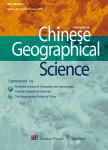Fish Assemblage Responses to a Low-head Dam Removal in the Lancang River
Fish Assemblage Responses to a Low-head Dam Removal in the Lancang River作者机构:Yunnan Key Laboratory of International Rivers and Transboundary Eco-security Yunnan University State Key Laboratory of Eco-hydraulic in Northwest Arid Region of China Xi'an University of Technology Huaneng Lancang River Hydropower Co. Ltd Laboratory of Biological Invasion and Adaptive Evolution Institute of Hydrobiology Chinese Academy of Sciences Engineering Research Center of Eco-environment in Three Gorges Reservoir Region Ministry of Education China Three Gorges University
出 版 物:《Chinese Geographical Science》 (中国地理科学(英文版))
年 卷 期:2019年第29卷第1期
页 面:26-36页
核心收录:
学科分类:07[理学]
基 金:the National Natural Science Foundation of China(No.41501574) the National Key Research and Development Program of China(No.2016YFA0601601) the Yunnan Applied Basic Research Projects(No.2016FB079) the National Science and Technology Support Program of China(No.2013BAB06B03)
主 题:fish diversity dam demolition habitat recovery Cypriniformes international rivers
摘 要:Dam removal is becoming an effective approach for aquatic biodiversity restoration in damming river in order to balance the aquatic ecosystem conservation with large-scale cascade damming. However, the effects of dam removal on fish communities in Asian mountainous rivers, which are dominated by Cypriniformes fishes, are still not well known. To determine whether dam removal on a mountainous river benefit restoration of fish diversity, we investigated the response of fish assemblage to dam removal using a before-after-control-impact design in two tributaries of the Lancang River(dam removal river: the Jidu River, and control river: the Fengdian River). Fish surveys were conducted one year prior to dam removal(2012) and three years(2013–2015) following dam removal. We observed rapidly and notably spatio-temporal changes in fish biodiversity metrics and assemblage structure, occurring in the Jidu River within the first year after dam removal. Overall, fish species richness, density and Shannon-Wiener diversity all increased immediately in above-and below-dam sites, and maintained a stable level in subsequent years, compared to unchanged situation in the control river. All sites in the Jidu River experienced shifts in fish composition after dam removal, with the greatest temporal changes occurred in sites below-and above-the former dam, resulting in a temporal homogenization tendency in the dam removed river. These findings suggest that dam removal can benefit the recovery of habitat conditions and fish community in Asian mountainous rivers, but the results should be further evaluated when apply to other dammed rivers since the dam age, fluvial geomorphology and situation of source populations could all affect the responses of fish assemblages.



